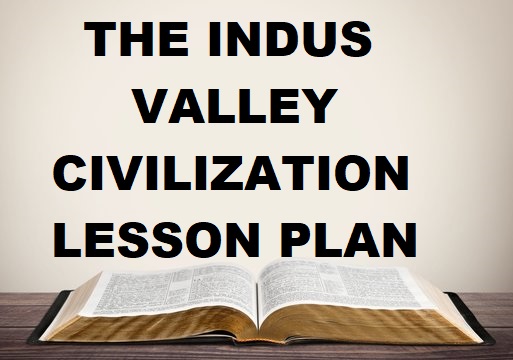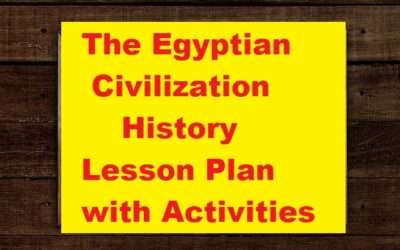The Indus Valley Civilization: History Lesson Plan with Activities
The Indus Valley Civilization lesson plan is one of the finest materials for Social Science educators as it balances clarity, creativity, and organization. This lesson plan brings about enthusiasm in students in learning about one of the first and most developed civilizations in the world.
Additionally, it enables educators to present complicated ideas like town planning, trade, and culture in easy, interactive ways. Through clearly defined objectives, visual media, and activities, Indus Valley Civilization lesson plan invites curiosity and engagement in the classroom. In addition, it helps teachers relate past history to contemporary urban living, hence making learning both relevant and engaging.
Thus, this lesson plan not only makes classroom teaching more effective but also enhances critical thinking and observation in the students. Briefly, the Indus Valley Civilization lesson plan converts conventional lessons on history into a fun adventure through time, assisting instructors in making the topic more enjoyable and relevant.
The Indus Valley Civilization: History Lesson Plan with Activities
Subject: History & Civics
Class: VI
Chapter: 3 – The Indus Valley Civilization
Board: ICSE
Time Duration: 45–50 minutes
1. General Information
Teacher’s Name: __________________________
Subject: History
Topic: The Indus Valley Civilization
Class: VI (ICSE)
Time Duration: 45–50 minutes
Teaching Method: Explanation, Discussion, Question–Answer, and Activity-Based Learning
Teaching Aids:
Textbook, World and India Map, Flashcards, Pictures of Harappa and Mohenjo-Daro, Replica or chart of seals and pottery, Smartboard/PPT presentation (if available)
2. Learning Objectives
By the end of the lesson, students will be able to:
Identify the geographical location of the Indus Valley Civilization and its principal sites.
Describe the town planning, architecture, and way of life of the people.
Explain the economic, social, and religious life of the Indus Valley people.
Acknowledge the artistic and technological developments of this civilization.
Appreciate the scientific and systematic nature of the Indus Valley Civilization as one of the earliest urban civilizations.
3. Introduction of the Topic (Engagement – 5 minutes)
Start by asking students:
“Have you seen images of ancient cities or ruins that are thousands of years old?”
Display a photo of the ruins of Mohenjo-Daro or Harappa.
Ask: “How do you think people lived there thousands of years ago before there were modern cities?”
Introduce the subject:
???? “Today, we will study about The Indus Valley Civilization — one of the oldest and most sophisticated urban civilizations in the world that thrived along the River Indus circa 2500 BCE.”
4. Teaching Aids
Visual Aids:
Photographs and diagrams illustrating town planning, seals, pottery, and drainage system.
Maps:
Map of India indicating places such as Harappa, Mohenjo-Daro, Lothal, and Kalibangan.
Audio-Visual Aids:
Brief video or PPT on excavation sites (optional).
Models:
Model of seals, bricks, or drainage plan.
Blackboard/Smartboard:
To note key points and emphasize new vocabulary.
5. Teaching Procedure
Step 1: Explanation (15 minutes)
A. Location and Discovery
Describe that the Indus Valley Civilization flourished on the River Indus in modern Pakistan and northwestern India.
Archaeologists unearthed Harappa and Mohenjo-Daro during the 1920s, which resulted in the name “Harappan Civilization.”
B. Town Planning and Architecture
The cities were well planned with straight streets, brick homes, and an efficient drainage system.
Every house had bathrooms, wells, and courtyards — illustrating high civic sense.
C. Economic Life
They were farmers, merchants, and artisans.
They were engaged in trade with Mesopotamia and produced seals, beads, and pottery.
D. Social and Religious Life
Initially they were well-organized society; they used to wear cotton clothes and ornaments.
They had common worship of Mother Goddess and nature; fire altars and figurines have been discovered.
E. Art and Craft
They were skillful in pottery, bead-making, metalwork, and sculpture.
The renowned bronze image of the Dancing Girl and the Bearded Priest exhibit artistic merit.
F. Decline
The civilization fell about 1900 BCE as a result of causes such as floods, earthquakes, or conquest.
Step 2: Discussion (10 minutes)
Get students to ponder with the following questions:
“What do you think contributed to making the Indus Valley cities so sophisticated during their time?”
“How were they comparable to cities today?”
“What can we learn from their city planning?”
Let students discuss and connect the subject to everyday life.
6. Activity 1 (Group Work – 10 minutes)
Title: Design Your Own Harappan City
Split the class into 4–5 groups.
Offer chart paper and color pencils.
Each group will create a basic city plan modeled on the Indus Valley — houses, roads, drainage, wells, and granaries.
Groups share their models with the class for a brief minute.
7. Activity 2 (Individual Work – 10 minutes)
Title: Harappan Artefact Sketch
Have students draw and label one item from the Indus Valley Civilization like a seal, pottery, the statue of the Dancing Girl, or a house.
Add short descriptions (e.g., material, purpose).
Bridging Disciplines: Integrating STEM into Social Science Classrooms
8. Classwork
Short Answer Questions:
Where did the Indus Valley Civilization exist?
Name two significant cities of the civilization.
Identify two aspects of Harappan town planning.
What were the primary occupations of the inhabitants?
Map Work:
Mark and label significant places – Harappa, Mohenjo-Daro, Lothal, Kalibangan.
9. Homework
Sketch and label the plan of a Harappan city along with its drainage system.
Write a short paragraph on “The Achievements of the Indus Valley Civilization.”
Learn the key words: Excavation, Citadel, Granary, Seal, Drainage System.
10. Learning Outcomes
Upon completion of the lesson, students will be able to:
Identify the Indus Valley Civilization sites on a map.
Describe the salient features of Harappan town planning and architecture.
Explain the lifestyle, trade, and religious practices of the Indus people.
Identify the artefacts like seals, pottery, and sculptures belonging to the civilization.
Appreciate the scientific and systematic nature of this ancient urban civilization.
11. Remedial Measures
For those students who experience difficulty in comprehending the subject:
Keep the content simple through story-type narrative or pictorial charts.
Leave printed summary notes on key points.
Run a brief recap test through pictures of artefacts and cities.
Employ peer tutoring — pair weak learners with stronger ones.
Redo the map work and vocabulary through flashcards and games.
The Indus Valley Civilization: History Lesson Plan with Activities
Conclusion:
Indus Valley Civilization lesson plan is an excellent instrument for Social Science educators as it intertwines structured instruction and interactive learning. With the utilization of explicit objectives, visuals, and interactive activities, the lesson plan allows teachers to describe the intricate elements of the civilization, like urban design, commerce, and social structure, in a straightforward and easy-to-understand manner.
In addition, it stimulates critical thinking and the application of historical information to contemporary living. With group work, map study, and artifact studies, instructors can render lessons engaging and memorable.
Additionally, the lesson plan promotes curiosity, creativity, and analytical ability to ensure that students not only acquire knowledge but also have fun discovering it. As such, this lesson plan is an effective guide that improves the teaching and learning process.
How can the Indus Valley Civilization lesson plan possibly change your classroom experience?
60 Geographical Terms Which Always Create Confusion





0 Comments